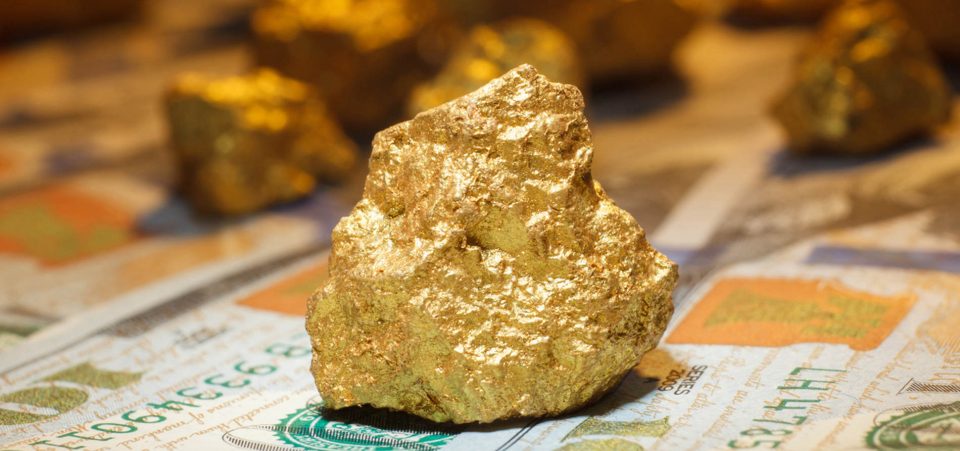BitGold: The New Gold Standard for Gold Savings And Payments?
There’s a new gold standard 2017—at least for their growing community of users. BitGold, GoldMoney…whatever you want to call it, has taken the gold community by storm with a platform revolutionizing the way gold is used in modern-day finance.
Before we get into whether BitGold is the next gold standard or not, it’s important to mention that BitGold is now officially known as GoldMoney Inc (TSE:XAU). This has been the case since July 2015, made official a couple months after BitGold acquired GoldMoney for an all-stock deal valued at $52.0 million. BitGold in now the retail payments and savings arm of the GoldMoney Network. Therefore, the terms BitGold and GoldMoney will be used interchangeably. BitGold to represent the retail savings and payments division within; GoldMoney to represent the publicly-listed business consortium.
The term “gold standard” denotes powerful intonations with most people. It is a monetary system where a country’s currency value is inextricably linked to gold. It represents a kind of kryptonite against the corruptible forces which seek to debase it. Gold is simply honest money, and America’s money supply had never been stronger while it was still on it.
The United States was previously privy to a hard gold standard from 1900-1933, with the passage of the Gold Standard Act of the United States in 1900. This established gold as the solitary standard for redeeming paper money, stopping bimetallism (silver), which could be exchanged for gold previously. The Act defined the amount of gold value of the dollar at 25 8⁄10 grains of gold at a purity of 90%.
There was no period in American history where the U.S. dollar was more stable. As the price of gold had been fixed at $20.67/ounce since 1879, the value of the dollar became fixed as well. Additionally, the U.S. dollar became fully interchangeable for gold, and many public and private obligations required repayment by the debtor in gold dollars of the same weight and fineness as those borrowed.
Things eventually changed when Franklin Delano Roosevelt partially took the U.S. off the gold standard in 1933. In an effort to combat soaring deflation due to the Great Depression, Roosevelt ordered all gold coins and gold certificates in denominations over $100.00 turned in for “fiat” money. By May 1933, the government had confiscated $300.0 million of gold coins and $470.0 million of gold certificates. It was a maneuver straight out of the Keyensian playbook: by increasing the amount of gold held by the Federal Reserve, this increased the Federal Reserve’s ability to inflate the money supply. (Source: “FDR takes United States off gold standard,” History, last accessed March 10, 2017.)
Roosevelt took additional supporting action by forbidding banks from paying out gold or to export it to other nations and re-fixed gold prices at $35.50/ounce. The latter measure alone increased the Fed’s balance sheet 69% with the stroke of a pen. Again, these measures were done to maximize the amount of gold in the Federal Reserve’s position, giving it a license to issue more money.
America completely abandoned the gold standard in 1971, when President Richard Nixon removed the gold linkage from the U.S. dollar completely. The dollar began floating on international currency markets, free to trade at whatever value the market would bear. This, effectively, began the modern day fiat money system we have today, where currency values are relative to each other.
De-linking gold completely allowed the government to borrow beyond its means. That might have been Nixon’s intention, as the costs from the Vietnam War were rising exorbitantly. Regardless, the de-linkage paved the way for every government following Nixon to borrow without restraint. After all, without the backing of gold, money is really just an I.O.U. created on a Central Bank ledger.
Price of Gold in $USD (Since 1971)
| Year | Close | % change |
Year | Close | % change |
| 2016 | $1,151.85 | 8.66 % | 1992 | $333.00 | -5.71% |
| 2015 | $1,060.00 | -11.6 % | 1992 | $333.00 | -5.71% |
| 2014 | $1,199.25 | -.4% | 1991 | $353.15 | -8.56% |
| 2013 | $1,204.50 | – 27.6% | 1990 | $386.20 | -3.69% |
| 2012 | $1,664.00 | 8.68% | 1989 | $401.00 | -2.23% |
| 2011 | $1,531.00 | 7.80% | 1988 | $410.15 | -15.69% |
| 2010 | $1,420.25 | 30.60% | 1987 | $486.50 | 24.46% |
| 2009 | $1,087.50 | 25.04% | 1986 | $390.90 | 19.54% |
| 2008 | $869.75 | 3.97% | 1985 | $327.00 | 6.17% |
| 2007 | $836.50 | 31.59% | 1984 | $308.00 | -18.95% |
| 2006 | $635.70 | 23.92% | 1983 | $380.00 | -14.99% |
| 2005 | $513.00 | 17.77% | 1982 | $447.00 | 11.75% |
| 2004 | $435.60 | 4.40% | 1981 | $400.00 | -32.76% |
| 2003 | $417.25 | 21.74% | 1980 | $594.90 | 29.61% |
| 2002 | $342.75 | 23.96% | 1979 | $459.00 | 120.57% |
| 2001 | $276.50 | 1.41% | 1978 | $208.10 | 29.17% |
| 2000 | $272.65 | -6.06% | 1977 | $161.10 | 20.43% |
| 1999 | $290.25 | 0.54% | 1976 | $133.77 | -3.96% |
| 1998 | $288.70 | 0.57% | 1975 | $139.29 | -24.20% |
| 1997 | $287.05 | -22.21% | 1974 | $387.00 | 0.98% |
| 1996 | $369.00 | -4.65% | 1973 | $106.48 | 66.79% |
| 1995 | $387.00 | 0.98% | 1972 | $63.84 | 43.14% |
| 1994 | $383.25 | -2.17% | 1971 | $44.60 | 14.65% |
| 1993 | $391.75 | 17.64% |
(Source: “Over 200 years of historical annual Gold Prices,” OnlyGold, last accessed March 10, 2017.)
The founders of BitGold knew their history. Roy Sebag and Josh Crumb sought to create a platform that would preserve the wealth that inflation was insidiously eating away month after month, year after year. They have largely succeeded.
Is BitGold the New Gold Standard in 2017?
When BitGold created a payments and savings platform useful enough to provide many of the financial services traditionally native to banking institutions, in great respect, a new community gold standard was created. For a reasonable fee, users could instantly buy gold for local currencies; the value of gold was linked exactly to spot prices; goods and services of all types could be bought and sold et al.
This inextricable linkage between gold and currency on the platform, in essence, allowed BitGold to become a de facto floating rate gold standard, if the literal definition of the term is used. Since BitGold is powerless to fix the price of gold to a set currency rate, it is not a true gold standard as historically understood, where one unit equals ‘X’ amount of gold. But regardless, the value of gold is pegged to the floating currency rate at all times, and transactions take place in real time.
The real story is potentially how BitGold intends to become a new gold standard in 2017—by influencing gold prices directly. This is theoretically possible if enough transactions take place on the platform, at a given time, to affect the spot market price.
For example, let’s imagine a scenario where a critical mass of users sign up to the platform. The gold price forecast 2017 (or beyond) kicks in and gold prices start soaring again. Inflation gains pace as world government debt, already at $70.0 trillion, starts rising again; particularly in the U.S., under the ultra-dovish monetary policies of Donald Trump. Transaction velocity picks up, as people increasingly utilize the BitGold platform to buy gold and preserve their savings in an inflationary environment.
In such a scenario, if enough users buy or sell gold on the BitGold platform, they might actually be able to influence the spot market price. Since the spot price of gold is determined by the front month futures contract with the most volume, if BitGold was to purchase a large amount of gold on behalf of its clients, this could move the price. Whether BitGold itself uses the Futures markets to purchase gold is irrelevant; someone along its supply chain likely will.
It’s hard to quantify how many transactions would be needed to affect the spot market, but attempt I shall.
It was reported in April 2016 that transaction volume on the BitGold platform totaled roughly $20.0 million a month. At those levels, this would imply approximately 16,000 troy ounces were bought and sold at various points within the month (at an average price of $1,250 gold). If we assume that half of those transactions totals are buys, and half are sells, then volume is nowhere near the level needed to meaningfully affect one side of the market. Remember, one futures contract is equal to 100 troy ounces, so even if we assume all 16,000 troy ounces were purchased for the intent of delivery, this would only amount to 160 contracts purchased for the entire month. In other words, BitGold’s volume is still a relative drop in the bucket.
While BitGold is likely quite far away from affecting the gold price directly, it keeps posting these impressive growth metrics. Key metrics included: GoldMoney business payment transactions in GAU increased by 203% QoQ in Q3 2017; quarter-over-quarter GoldMoney Network Revenue grew 29% from Q2 2017; and the platform-wide Mastercard Prepaid card program grew 15% quarter-over-quarter from Q2 2017. (Source: “Goldmoney Inc. Reports Financial Results for Third Quarter 2017,” Yahoo! Finance, February 2, 2017.)
BitGold also followed its GoldMoney acquisition in May 2015 by partnering with SchiffGold in July 2016. The joint venture aimed to enhance the services SchiffGold offers GoldMoney customers and the reach it has on the global market (Source: “SchiffGold Announces Joint Venture with GoldMoney,” SchiffGold, July 9, 2016.)
If BitGold keeps growing its network and adding thousands of users monthly, perhaps its reputation as a modern-day gold standard bearer will have merit. This would truly be the case if a critical mass is reached where its involvement in the market could actually influence price. The ‘BitGold Fix’ has a nice ring to it.
To BitGold or Not to BitGold?
There are a multitude of ways on how to invest in gold. Some traditionalists prefer the old-fashioned way of having physical in their possession; some will prefer GoldMoney’s ultra-useful savings and payments platform, BitGold.
In the author’s humble opinion, BitGold provides an exceptional, secure option in which to save gold. The user experience is great, with features mimicking or exceeding those of top-tier banking institutions. There’s even a tax tool which calculates yearly gains or losses from the purchases, sales, and spending transactions in an account. This is quite handy where gold is subject to taxation in local jurisdictions.
Even if the intention is to save gold for the long term, having the payment platform option is a nice feature if necessity warrants a quick cash out of your gold holdings. It sure beats going to a bullion vault in person, where spreads are much higher than BitGold’s 0.5% buy/sell fee.
Whether BitGold is a true “gold standard” or not rests in the eye of the beholder. But what’s indisputable is the utility, user experience and convenience BitGold provides, unbeknownst to the gold community prior to its arrival.






